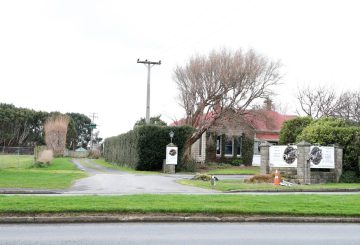Natagpuan ng isang aso sa Southland, New Zealand, ang isang tag mula sa isang malaking puting pating na sinusubaybayan sa Australia. Ang tag ay nahulog sa pating pagkatapos ng 150 araw sa dagat at sinusubaybayan sa isang malayong beach sa malayong kanlurang gilid ng Catlins.
Si Kelsi Hayes, isang residente sa Tokanui, ay naglalakad ng kanyang aso na si Quasi sa beach nang lumabas ang tag mula sa ilang damong-dagat na nunguya ni Quasi. Sa kabila ng paggamit ng isang metal detector sa mga nakaraang paghahanap, walang kapalaran si Hayes na paghahanap ng tag hanggang sa natuklasan ito ni Quasi.
Ang Shark Experience, isang shark diving operator sa Bluff, ay hinikayat sa mga lokal na sumali sa paghahanap matapos maipaalam ng isang pangkat ng pananaliksik sa New South Wales na ang tag ay nasubaybayan sa beach malapit sa Fortrose. Hindi sinasadya, isang koponan mula sa Shark Experience ang dumating sa beach tulad ng natagpuan ni Quasi ang tag.
Ang tag ay nagmula sa isang lalaking malaking puting pating na halos 3m ang haba nang mai-tag ito sa One Mile Beach sa Forster, Australia, noong Hunyo. Lumabas ang tag na humigit-kumulang 2100km ang layo, mula sa hilagang bahagi ng Rakiura/Stewart Island, noong Nobyembre. Pagkatapos ay lumabas ito sa dagat at hugasan sa baybayin sa bibig ng Ilog Mataura sa lugar ng Fortrose noong Disyembre.
Ang tag, bahagi ng programa sa pamamahala ng pating ng pamahalaan ng New South Wales Government, ay naglalaman ng data tungkol sa lalim, temperatura ng tubig, at lokasyon ng pating sa nakalipas na 150 araw. Ito ang ika-1000 tag na nakakabit sa isang malaking puting pating ng programa. Ang mga tag ay dinisenyo upang kalaunan ay ibababa ang mga pating at sinusubaybayan sa pamamagitan ng GPS.
Natutuwa si Shark Experience na maibalik ang tag sa Australia.



























































